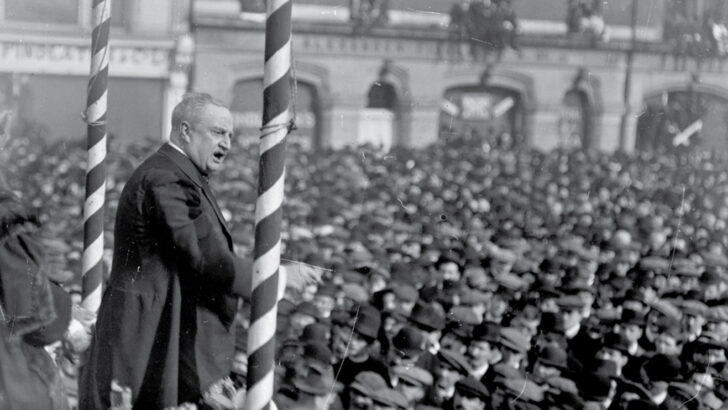John Redmond and Irish Parliamentary Traditions
edited by Martin O’Donoghue and Emer Purcell (UCD Press, €30 / £24.90)
This volume includes seven papers delivered at a symposium to honour John Redmond held in March 2018 as part of the Decade of Centenaries commemorations. To these two further papers have been added for publication.
The aim of the volume is to locate John Redmond within what the editors refer to as “Irish parliamentary traditions”. The significance of the plural – “traditions” – in this context is not obvious to this reviewer.
In 1972 RTÉ broadcast a series of Thomas Davis Lectures on The Irish Parliamentary Tradition – note the singular – which was edited by Brian Farrell and published in 1977. Those lectures traced the roots of our parliamentary tradition back to Gaelic and medieval Ireland, and considered such manifestations of the parliamentary tradition as the Confederation of Kilkenny and Grattan’s Parliament.
Scope
In contrast, the scope of this volume is limited to the period since the 1870s and the emergence of the “modern disciplined parliamentary party” – that is, the Irish Parliamentary Party (IPP) at Westminster and its successors in Dáil Éireann.
The main parties in Dáil Éireann since 1919 can be regarded as successors of the IPP insofar as they have adhered to the parliamentary and democratic norms to which the IPP accustomed the Irish people, and also because of the continued participation of former IPP members and supporters and their families in Irish politics.
This theme is explored in this volume in papers by Martin O’Donoghue and Claire McGing. The latter focuses on the career of Bridget Redmond, widow of Captain William Redmond, who succeeded him as TD for Waterford in 1933 and served in the Dáil thereafter until her death in 1952.
Redmond resembled Butt in many ways, not least their shared desire to dampen down the Irish separatist passion within political discourse”
McGing’s paper highlights the dearth of female representation in the Dáil when Bridget Redmond was a member. There were never more than five women TDs. Her paper complements the paper by Margaret Ward on John Redmond’s opposition, and that of the IPP, to women’s suffrage.
Redmond’s opposition is often dismissed as “merely strategic, an outcome of his determination to win Home Rule”, but Ward rejects that utterly. She concludes that “there is no evidence to show that he ever contemplated a time when women in Ireland would possess a vote – either for the Westminster parliament or for a Home Rule legislature”.
While Redmond and, before him, Parnell are universally recognised as the great popular leaders of the IPP, its founder was Isaac Butt – a man now almost totally forgotten. Colin Reid’s paper in this volume rescues him from obscurity. While noting that Parnell “toppled Butt without remorse or mercy” in furtherance of more aggressive parliamentary tactics, Reid claims him as “the intellectual father of Home Rule” and argues that “Redmond resembled Butt in many ways, not least their shared desire to dampen down the Irish separatist passion within political discourse, preferring to view the ‘Irish question’ as a constitutional riddle rather than a national dilemma”.
Tradition
The constitutional nationalist tradition represented by Butt, Parnell and Redmond – and also by Daniel O’Connell – is usually portrayed in the history books as antithetical to the physical force tradition of Irish nationalism. This volume suggests, however, that the two traditions were inextricably intertwined. Irish nationalism was not strictly binary.
As noted in the Introduction to the volume, “many Irish Party MPs has Fenian roots and … Redmond visited Tom Clarke, one of the architects of the 1916 Rising, eight or nine times in prison in the 1890s”.
There is certainly a case for saying that [Carson] introduced the gun into Redmondite politics”
Indeed, Margaret O’Callaghan emphasises in her contribution to the volume that “Redmond was romantically attached to the 1798 Rebellion; he celebrated the Fenian tradition”; and Pauric Travers reminds us in his paper that both Parnell and Redmond “commanded the loyalty of the Fenian element” for most of their careers. That loyalty was rooted in the so-called New Departure, a rapprochement between the two nationalist traditions negotiated by Parnell, Michael Davitt and John Devoy in 1878.
The New Departure effectively removed the gun from Irish politics for 35 years until the Ulster Volunteers landed their arms at Larne. Alvin Jackson, in a paper reprising his comparative study of Redmond and Carson published by the Royal Irish Academy in 2018, concedes that “there is certainly a case for saying that [Carson] introduced the gun into Redmondite politics – or perhaps that he reintroduced the gun into Irish politics more generally”.
We have lived with the gun in Irish politics as a consequence of Carson’s actions up to the present day. The horror of this political violence illuminates why it is right to honour Redmond and the Irish parliamentary tradition as this volume does. That tradition offers a better model for the stable democratic state that Ireland is today than does the physical force tradition.


 John Redmond the politician speaking to a mass meeting in Dublin in 1912
John Redmond the politician speaking to a mass meeting in Dublin in 1912 